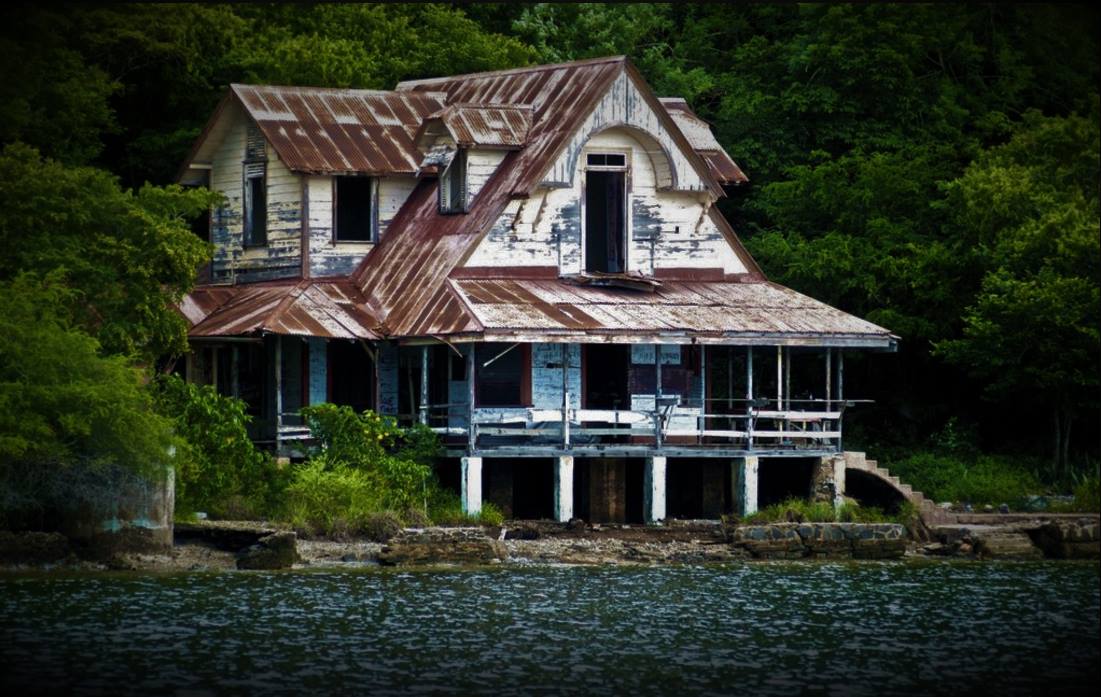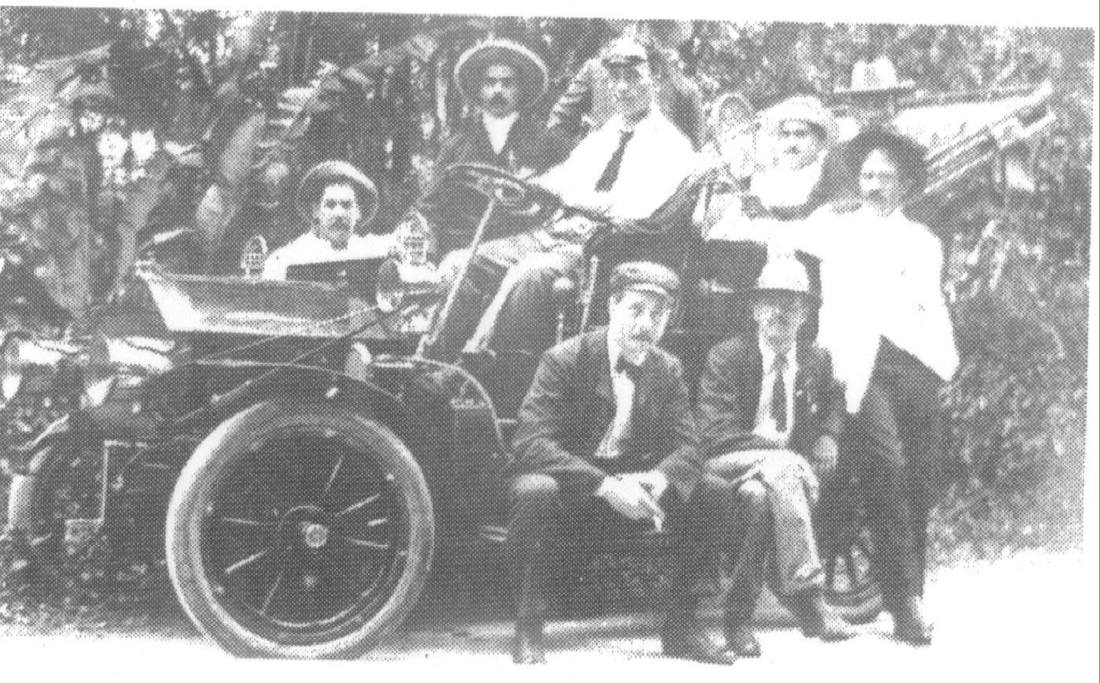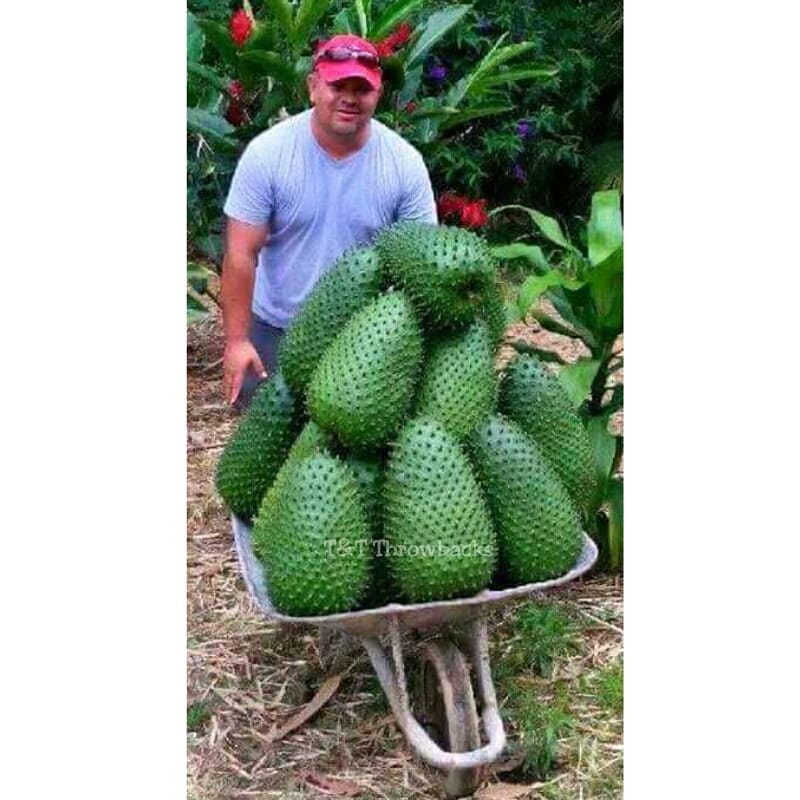 Chacachacare is an island in the Republic of Trinidad and Tobago This mysterious, uninhabited island, once the site of a colony of lepers run by a group of nuns, is only five miles off the northwest coast of Trinidad.The colony housed around 250 patients. They lived in several buildings scattered on the island and was forced to care for themselves other than aid of the nuns The island was spotted by Christopher Columbus on his third New World voyage on 12 August 1498, and his little fleet spent the night anchored in Monkey Harbour. He named the island 'Port of Cats' because he heard roars of what he thought were wildcats. He had mistaken the call of howler monkeys for a "wildcat". The island later became a nuns quarters and a leper colony. In 1942, 1,000 U.S. Marines were stationed on Chacachacare and built barracks on the island. The island was abandoned by the 1980s, when the nuns left their quarters and when the last leper who was on the island died in 1984.The small former residences of the leper residents have been swallowed up or obscured by vegetation, and parts of the old rock road along the shore, as well as some piers and docks still remain. There is said to be a ghost of a young nun who walks around at night with a lantern and haunts the former convent because she supposedly committed suicide. The one mentioned on GHI had her falling in love with a Venezuelan sailor. After their relationship was discovered, they were told to split up which led to her hanging herself over the altar in the chapel. Another version states the guy wasn't a sailor but a priest. A third one says she committed suicide after discovering she had become pregnant by a local fisherman. "Went there on a university field trip and actually spent the night. You do hear strange noises at night, nothing you would expect from the known fauna there. One of my group members claimed hearing footsteps in the abandoned house we slept in while everyone was asleep. only eight of us were in that house." By Nikoli F "In the main abandoned doctors house there is indeed a ghosts one night while camping there we were all asleep but suddenly i woke up to see a man standing right in front of where we slept and as i opened my eyes yes i saw him and then he just vanished i remembered clearly that he was wearing a watch and after i remembered earlier we were playing hide and seek upstairs my uncle told me he saw the same man wearing a watch and said to him "ur it i caught u " and he said nothing and walked away he couldnt see his face though cause ut was pitch black its haunted belive me you can feel the heavy presence around u while ur there and oh theirs a cemetery up in the back of the house ". By orneillia m "I have had one experience when my friend wondered into the grave yard on his own for an unknown reason even up to now , returning hysterically running along side the cliff on the path to the cemetery claiming his glasses were taken from him by a woman that wore red lip stick , to my surprise while exploring the island , i came across the abandoned houses ,which are a beautiful part of history , i found a tube of red lipstick , and a box of matches ,the very next day .We found them laying in the very same spot, there is something spooky i must admit , even with a crew of 12 you can feel the intense aura in the buildings , it was said by folklore that the head nun was having an affair with the priest , and when it was exposed she hanged herself in the church , its beautiful during the day , not so sure about the night lol..By The graveyard on the island was for nuns, mostly from France. The nuns cared for the people in the leper colony before the cause of leprosy was fully understood. They probably believed they were putting themselves at great risk for acquiring the disease themselves. The nuns’ sleeping quarters are very creepy, set amongst the overgrown trees which even in bright daylight make the ruins gloomy and mysterious. It’s easy to see why the buildings became a subject for Ghost Hunters International, especially if you carefully make your way upstairs and see the bizarre person-shaped cutouts in the wooden walls (it’s believed these are where statues were fastened and it was just easier to take out the wall than detach the statue). The Bolo Rocks are a series of rocks located at the southwestern point of Chacachacare. They were named after a slave named Bolo who worked for a whaling station on the island. It seems like with every visit to Chacachacare you’re left with more questions and secrets, than answers. Not to say this place is ‘haunted’ or unexplainable, but rather there is so much history on this small island, it’s hardly likely you’ll get it all on one visit! Witnesses have also reported hearing voices, noises and footsteps, seeing apparitions, shadows, being pushed, feeling cold spots. Source: Virtual Museum of Trinidad and Tobago
3 Comments
 SPECIAL POSTED ON DECEMBER 3, 2010 By HISTORIAN AND AUTHOR ANGELO BISSESSARSINGH For most Trinidadians, no Christmas season would be complete without a trip to Frederick St in Port of Spain to take advantage of bargains, window-shop and to savour the whirl and rush of humanity occasioned by the hectic Christmas atmosphere. This photo dates from 1950. With the jolly season now in full swing, we begin to be aware of those annual occurrences which make Christmas in Trinidad a unique and savory experience. The hams have begun to put in appearances in the supermarket freezers, and the ruddy hue of sorrel on the wooden trestles of roadside hucksters. Demijohns of ginger ale have begun to grace windowsills for fermentation, and notwithstanding the astronomical price of the raw material, most assuredly will give a sharp bite to those who dare to partake of the aged vintage. Errant bakers of the domestic kitchens are sampling with gusto the rum-drenched dried fruit which have been soaking since the middle of June and which will soon form an integral part of an aromatic fruit cake. Toys which range from the simple trinkets of a bygone era to complex mechanisms with embedded microchips have commenced their temptation of young desires who fervently hope that Santa will bestow upon them, the rewards of a year of good behavior. Amidst the thick air of anticipation and festivity it would not be amiss to take a retrospective look at local Christmases of yesteryear. Almost every nostalgic Trinidadian and Tobagonian can tell stories of the ham being boiled in a pitch-oil tin, the flurry of new curtains, paranderos and the joyous tedium of pastelles on the make, but I intend to take a more historically systematic view when looking at the Trini Christmases Past. In the pre-emancipation era (1834 and earlier) Christmas was celebrated in the plantation great houses with much pomp and ceremony as befitted the status of landed gentry. With the influx of French settlers with the 1783 Cedula of Population, Christmas balls became fairly commonplace, graced no doubt by lavish dinners of wild meat roasts, consommés of local fruit, and wines imported from Europe. The house slaves of the estates would have been the grateful end beneficiaries of the residue of these Christmas revels of the masters. The pleasure of the field slaves were infinitely more simple and consisted of little more than an extra allowance of food and perhaps a length of cloth. One account from 1823 tells of a Christmas on Lopinot’s La Reconnaissance cocoa estate where slaves were given a dole. The account runs thus ‘At nine o’clock while at breakfast, the whole of the negroes came dressed in the gayest clothes to wish us a Merry Christmas, and a piece of beef and an allowance of flour and raisins were distributed to all of them with a proportion of rum for the men and wine for the women.’ The writer continues to describe how the slaves were given two suits of clothes each, following which they visited the cemetery of the Lopinot family (still to be seen) where prayers were said for the departed Comte de Lopinot and flowers strewn over the huge unmarked gravestones. With the advent of East Indian labourers on the sugar and (to a lesser extent) cocoa estates of the island after 1845, Christmas took on a dimension of minor importance. Mostly, the labourers were Hindus and Muslims and therefore did not celebrate Christmas. Admittedly, some aspects of the field slave Christmas still survived as 19th century accounts tell of one proprietor’s wife in Central Trinidad, Elisa DeVerteuil, sharing out an annual bonus of flour, cloth and other staples to the East Indians of Woodford Lodge estate. The arrival of Rev. John Morton in 1868 marked the commencement of the Canadian Mission to the Indians (CMI) through the auspices of the Canadian Presbyterian Church. Under the influence to the early missionaries of the CMI, Christmas became a more regular occurrence in the predominantly Indo-Trinidadian sugar-belt communities of Central and South Trinidad. Those early CMI Christmases were simple affairs, with carols being sung (some in Hindi through the translations of the Rev. Dr. Kenneth Grant and Lal Behari) and presents in the form of decorated cards and booklets being distributed, these being sent from mission fields in Canada for the benefit of their ‘heathen’ brethren in Trinidad. Conversely, as is recorded by Sir V.S Naipaul in A House for Mr. Biswas, Indo-Trinidadian Christmas celebrations in the estate barracks comprised for the most part of a surfeit of food and grog, after which a spate of wife and child beatings would inevitably follow to cap off Christmas Day revelries. Christmas for the urban Afro-Trinidadian, particularly for those of the barrack-yards of East Port of Spain, was a more complex affair although like their East Indian contemporaries, Yuletide activities invariably involved the consumption of copious libations of spirits, sometimes with unwelcome side-effects. The seminal thesis on life in the barrack-yards published by James Cummings (Barrack-Yard Dwellers) gives an insightful window into the Christmases of these unique inner-city environments. Cummings tells of old curtains being boiled in a broth of tea-leaves to brighten the fading textiles, when new pieces could not be afforded. Crockery, which languished year-round as ornaments would be washed in anticipation of the Christmas feast, the preparation of which was a process in itself. According to Cummings, chicken, ham and beef would be prepared according to the circumstances of the families. ‘Professional’ women known as matadores, would be provided with money beforehand by their male ‘keepers’ and would indulge in much food and drink for the big day. The all important preparation of the fruit cake would be supervised by ‘peel men’ at local bakeries, which in fine Dickensian style, would take in the batter of the barrack-yard cakes to be baked. The peel men were sometimes tipsy from numerous shots of rum, so often the cakes met with disaster when being slipped into and out of the mud ovens with a long-handled wooden paddle known as the ‘peel’. The menfolk of the barrack-yards were not left standing in the Christmas bustle. Months beforehand, they would purchase gallons of poor-quality rum known as ‘ca-ca-poule’ to which would be added tonka beans, citrus peel and even methylated spirits to increase the mellowness and potency of the rum. A more dignified barrack-yard Xmas dinner of the 1930s is recounted in C.L.R James’ Minty Alley wherein the well-furnished table of Mrs. Rouse is graced by a quart of iced champagne, good company and the unique camaraderie of a truly Trini Christmas. A valuable glimpse of a Christmas of the white planter elite in 1911 is given by P.E.T O’Connor, whose grandfather, Gaston De Gannes was one of the last aristocratic French-Creole patriarchs of the plantation era and who presided over his stately home, La Chance, near Arima. Every Christmas, De Gannes’ large family would descend on La Chance, complete with a battery of maidservants for care of the children. O’Connor describes the Christmas morning ritual where the children were sent up to Gaston’s room to pay him their season’s compliments: ‘He would be standing in his bedroom near his huge wardrobe with its doors open, as on the inside was tacked a neatly written list of grandchildren. As we all paraded in and out with our good wishes, he would consult the list and hand out the appropriate largesse. A golden sovereign to the eldest son of each family, a half sovereign to the eldest girl and a silver crown or half-crown to the younger children’. In terms of the monetary values of the day, the golden sovereign coin was worth more than an entire year’s wages for one of the labourers on Gaston’s cocoa estates. O’Connor goes on to describe the breakfast of hot chocolate and bread, followed by Mass at Santa Rosa R.C Church, the day being crowned by a magnificent family dinner, graced by Bordeaux wine and French claret. The emergence of parang is really attributable to the influx of peons, called the panyols, of Venezuela, who provided a significant percentage of the labour force during the cocoa boom years of 1870-1920. While parang has become fairly commercialized of late, the Christmas ritual, introduced by the panyols, actually involves three stages. In Lopinot, the tradition held true for many years, preserved by such sages as Sotero Gomez and Pedro Segundo Dolabaille. The first stage is when upon arrival at a hospitable home, the paranderos would sing from the doorstep, an Aguinaldo, or song of praise, telling of the Nativity, Adoration or Ascension of Christ. This is the signal for the householder to throw open his/her doors to the paranderos who continue to serenade the home with Aguinaldos until the descanso, or rest period, when the bards are regaled with victuals and drink consisting mainly of ham, pastelles and fruit cake, as well as sorrel and ginger beer. From the doorsteps of the countryside, the parang music was taken to a national level by the artistry of pioneers like the late Parang Queen, Daisy Voisin and the Lara Brothers. While on the subject of music, it is interesting to note that in San Fernando during the 1870s to the 1890s, the crown jewel of the town’s Christmas events calendar consisted of a grand concert which was held first at the Oriental Hall on Carib St. (present-day location of Grant Memorial Presbyterian School) and later, at the Drill Hall (where Naparima Bowl now stands). The performers in this cantata almost unanimously hailed from the very musically-inclined Vilain family, who were a prominent coloured French Creole clan. Patriarch Jean-Marie Vilain, along with his sons Pierre, Alexander and Jean-Marie Jr. were gifted musicians. Pierre, until his death in 1879, even had an international reputation as a master of the violin which earned him the title of ‘The West Indian Paganini’. With the death of Jean Marie and Alexander in the 1890s, this chapter of San Fernando’s Christmas story was brought to a close. In retrospect, Christmas has from the earliest period, occupied a special place in the collective consciousness of our people. Even when adversity beset the islands during two World Wars and the recessionary period of the 1980s, nothing seemed to be able to dull the inherent warmth and camaraderie of Trinbagonians which find its most apt expression during Christmastime. As the words of Susan Maicoo’s now-staple ballad most appropriately put it ‘Trini Christmas is de best". National Security Officers Foundation of the Ministry of National Security Music Video
 Fellow Citizens of Trinidad and Tobago, On behalf of my family and the Government of Trinidad and Tobago, I extend warm and sincere Christmas greetings to the Christian and the wider national community. On this day, it is my fervent hope that the optimism and goodwill that characterise the Christmas season will serve to inspire the people of our blessed nation as we approach the New Year. In the celebration of this joyous occasion, we recognise that it is our diverse cultural heritage which has given us a sense of national pride and purpose that enable us to observe Christmas in a very unique way, with our own traditions.  As a child growing up in the early 1960s I vividly remembered the fake snow covered Christmas Tree my father made. Just a coffee branch covered with cotton wool. An activity that included everyone in the family . Decorations were expensive so my father being a creative man would use pine cone ornaments or handcrafted minature toys which he carved himself out of pieces of wood , my mother would have us cover match boxes using red crepe paper tied with thread and hung from the branches. Paper garlands were made from red and green crepe paper. Christmas wreath was made from vines , shaped into an open circular frame and covered with moss collected from the cocoa trees growing behind our house. All siblings looked forward to going to the cocoa field to collect moss for our Chritmas Holly. Christmas held its own magic. Each child in family got only one toy each year. So we cherished what we got and was happy. Christmas eve the smell of home made bread , and black fruit cake baking in the aluminum oven placed on the stove filled the air. Ham was brought from the village shop This was eaten with bread on Christmas morning. (Source: Patricia Bissessarsingh - Virtual Museum of Trinidad and Tobago) Traditions have changed over the years but memories of Christmas of long ago remain etched in my memory. What do you remember about Christmas when you were a child? Tell us about your memories in the comments below. 1907 Cadillac . Trinidad (1910) The first car in Trinidad was a steam-powered Locomobile in 1900. This Cadillac was owned by the wealthy DeVerteuil family who owned vast cocoa estates. Source: Virtual Museum of T&T
Photo description :Mrs Blackadder, schoolmistress of many years at the Tacarigua CMI school, with some of her students and Dalmatian. Circa 1899.  It's that time of year when Christmas Treats for Children is a common occurrence in schools, villages and communities throughout Trinidad and Tobago . But how many are aware of how concept of Christmas Treat for children in Trinidad first started? This article written by Founder of VMOTT Angelo Bissessarsingh provides us with the answer. When indentured labour began entering Trinidad from India in 1845, the overwhelming majority of these people were Hindus with a small number of Muslims. Christmas was an unknown concept to them of course and here in the Caribbean, they would have their first contact with this festive season. The labourers were bound in five and ten-year contracts to sugar estates (cocoa plantations to a lesser extent), and from 1866-1880, were offered an incentive to remain in the island and form a peasantry which would provide a seasonal workforce for the plantations. Whilst bound to the estates, a few owners and managers of a more benign disposition would have introduced Christmas to the lives of the workers. Almost certainly, this was the case of the Orange Grove Estates conglomerate which was managed by the foresighted William Eccles (1816-59), who founded an industrial school and orphanage in Tacarigua, under the auspices of the Anglican Church. This paternalistic approach would have also pertained at Lothians Estate near Princes Town where the kindly Irishman, H B Darling was the proprietor. The coming of the Rev John Morton and his wife, Sarah, in 1868 to establish the Presbyterian Church’s Canadian Mission to the Indians (CMI) began a long process of trying to find the right method of evangelisation and at once hit upon education as the key. Dozens of schools were founded across the island with concentration on the areas where there was a predominantly high population of ex-indentured labourers and their children. Churches in Quebec, Nova Scotia and Ontario would forward to the CMI large boxes filled with small bibles, toys, religious books and sometimes clothing (made by the Auxiliaries of the Women’s Foreign Mission Society) which would be distributed in the schools. The ladies of the Chalmers church in Quebec were particularly magnanimous for in addition to the regular fare, they sent along dressed dolls, pocketknives, school bags, marbles, pencil boxes, scissors, whistles, necklaces and watches. The whole was often valued at $60 which was quite a large sum in those days, and this generosity from Quebec was a steady expectation from the early 1890s right up to 1914. One can only imagine the excitement of the poor children of the canefields upon receiving such elaborate presents. Mrs Morton described one such treat in 1877, at Mission Village, which would later become Princes Town: “Examination of the Mission School Miss Blackadder’s began at 12 sharp. A number of white people present—Mr Darling, who sent a good supply of candies and two beautiful bouquets, Mr and Mrs Frost, who sent a nice parcel of small books and cards, and some others. Children present sang nicely and, indeed, went through their exercises very well and were particularly clean. The little pictures from the box you sent were greatly prized. I hope you will be able to get some more. “All got some candy and a large banana; that was all the treat.” The early experiments with treats proved to be so successful for the conversion process that it spread to other parts of the CMI field including Tunapuna. At the Tacarigua school, where the very same Mrs Blackadder from Mission Village was later assigned, Mrs Morton described a treat in 1887: “A Christmas treat early became an institution. We had seven schools to provide for. In each we examined the register and counted how many children had made over 400 attendances, how many 300, and so on. All these had cakes and candy and a little present according to the days they had made. The careless ones who had too few attendances were called up and told they could not have any present and only a small share of the sweetmeats. A very few who came in for cakes but had not come to read were sent home without anything as a warning to the rest. “We find this a good plan for encouraging attendance; we have adopted the same plan in our Sabbath schools, but confining the rewards to the very best children.” The Christmas treat tradition soon spread to other denominational schools and was often accompanied by a concert. This often coincided with the auspicious annual visit by the local school inspector who would assess the progress of the students. Today, Christmas treats have become sordid affairs of sometimes dubious motives, but those who were educated in the primary schools of several decades ago still cherish memories of the joy felt at the bestowing of small gifts which meant so much. Source: Angelo Bissessarsingh, Virtual Museum of Trinidad and Tobago 2014 |
T&T news blogThe intent of this blog is to bring some news from home and other fun items. If you enjoy what you read, please leave us a comment.. Archives
July 2025
Categories
All
|







 RSS Feed
RSS Feed